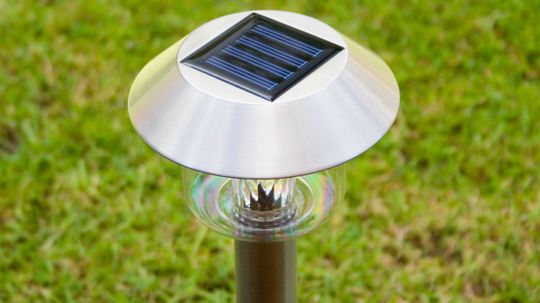As the sun sets and darkness envelops our surroundings, solar yard lights emerge as a beacon of light in the night. These innovative devices harness the power of sunlight to illuminate outdoor spaces, providing both functionality and aesthetic appeal. Understanding how solar yard lights work requires delving into their intricate mechanics and components.
The Power of Photovoltaic Cells
At the heart of every solar yard light lies a photovoltaic cell, also known as a solar panel. This crucial component is responsible for converting sunlight into electrical energy. Composed of semiconductor materials such as silicon, these cells absorb photons from sunlight and initiate an electron flow that generates direct current (DC) electricity.
This DC electricity then travels through wires within the solar yard light system to charge a rechargeable battery specifically designed to store this energy efficiently. The battery acts as an essential reservoir, ensuring continuous operation during nighttime or cloudy days when sunlight is scarce.
Illuminating with Light-Emitting Diodes (LEDs)
Solar yard lights utilize light-emitting diodes (LEDs) to produce bright illumination while conserving energy consumption. LEDs are highly efficient at converting electrical energy into visible light due to their unique semiconductor properties.
When activated by the stored DC electricity from the battery, these tiny electronic devices emit photons that create visible light without generating excessive heat like traditional incandescent bulbs do. This characteristic not only enhances safety but also contributes significantly to extending the lifespan of solar yard lights.
An Intelligent Control System
To optimize performance and ensure efficient use of stored energy, modern solar yard lights often incorporate intelligent control systems. These systems employ sensors that detect ambient lighting conditions or motion in proximity to activate or adjust various functions accordingly.
For instance, when darkness falls, the control system triggers the LED lights to turn on automatically. Additionally, motion sensors can detect movement and increase the brightness of the solar yard light temporarily as a security measure or to enhance visibility in specific areas.
Conclusion
Solar yard lights have revolutionized outdoor lighting by harnessing renewable energy sources and employing advanced technology. By utilizing photovoltaic cells to convert sunlight into electrical energy, storing it in rechargeable batteries, and efficiently illuminating spaces with LEDs controlled by intelligent systems, these devices offer an eco-friendly and cost-effective solution for outdoor illumination needs.
As we continue to embrace sustainable practices and seek innovative solutions for our daily lives, solar yard lights stand as a testament to human ingenuity in merging functionality with environmental consciousness.


